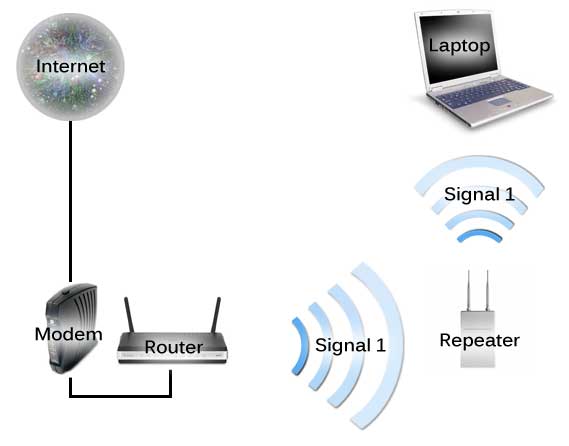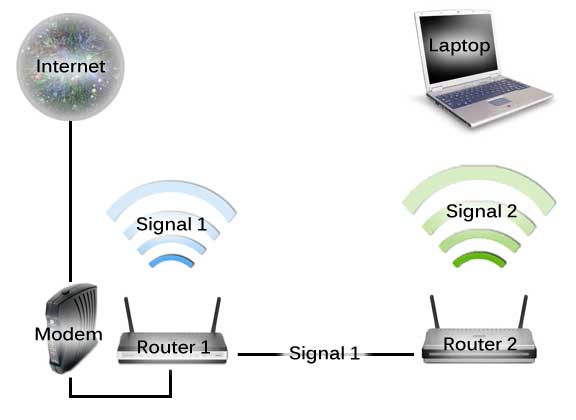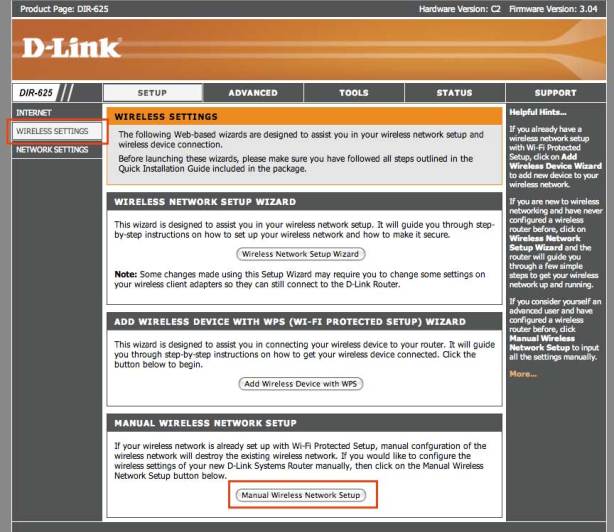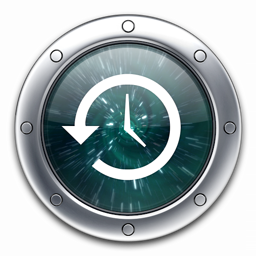!!! If you find this how-to helpful, please visit the blog http://jennandmaxweddingthreesome.wordpress.com/ My friends are trying to win contest to help fund their wedding. They could use a few extra page views. Thanks!
K so I lied kinda. This article doesn’t show you how to turn it into a repeater (your router must support network bridging for that), but I figured I’d put both names in the title in-case you’re unfamiliar with the differences in terminology (like I was when I started researching this).
Repeater: A device or advanced router that will retransmit the signal from another wireless router.
Access Point: A router (connected to your original network) that broadcasts an entirely new signal, but connecting to it will allow you to access the original network.
Instructions
(The following assumes that you already have your modem and router set up, and would like to extend the wireless coverage)
——————
Step 1: Plug in the new router (the one you will use as the access point) to a electrical outlet, and use a straight-through network cable to hook your computer up to it in one of the LAN slots (1-4). Note: Do not connect the new router to anything else just yet. That will come in later steps.
Step 2: Under ‘Network Settings’
Change the IP address of this new router so it is in the same subnet as the main router (I changed mine to 192.168.0.2), but make sure it does not have the same IP address as the main router.
Note: After doing this, if you type 192.168.0.1 in your browser it will direct you to your main router, and 192.168.0.2 will direct you to this new access point
Ensure it has the same Subnet Mask as the main router (255.255.255.0)
Disable DNS Relay
Disable DHCP Server
Step 3: Under ‘Wireless Settings’->’Manual Wireless Network Setup’
Give your network a name. This can be the same as your previous wireless network or a new name. My original router is broadcasting as ‘dlink’ and I called this one ‘Chris’
Set up some sort of security if you would like.

Wireless Setup Page
Step 4: Reboot your new router to save all the settings. Now take a straight-through network cable and connect the two routers. Plug one end into the LAN of the main router (spots 1-4), then plug the other end into the LAN of the new access point (spots 1-4) Do not plug it into WAN of the new access point!!! Although this seems logical, it does not work.
Step 5: Connect to your new router and bask in the glory.

Resources:
—————
http://www.dslreports.com/faq/11233
http://www.ezlan.net/router_AP.html
[+ reddit creddit for the comic above]
—————————————————————————————————————————–
Update:
Just moved into a new apartment and realized this works for another scenario: Rogers (and Bell and likely other cable/DSL providers do this as well) gave me an “SMC Networks” brand all-in-one modem / router. Sweet right? The problem is that it broadcasts in b and g but not in n (the fastest of them all)! I mean, n has been out for YEARS and they try to give me a b / g router!? This is just salt in the wound after Rogers, Bell and the CRTC tried to pass Usage Based Billing [1, 2, 3]. </rant>
What I ended up doing was setting up my D-link as an access point (as described above), plugging it into the SMC modem/router, but disabling wireless broadcasting on the SMC router. This way, only one wireless signal is being broadcasted and it’s the one in n.





